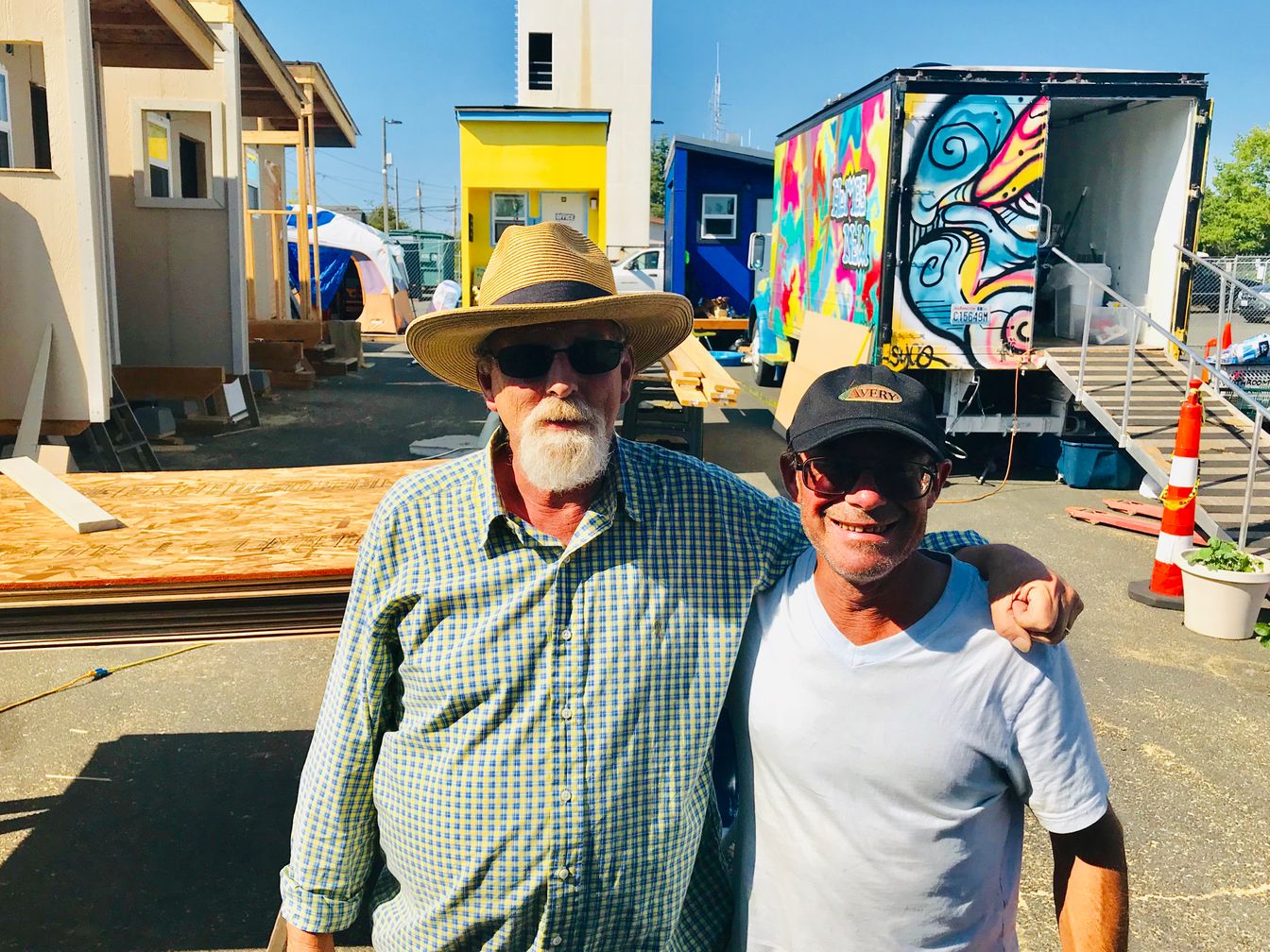- Alumni (Profile)
Tom McNutt ('77)

Tom McNutt ('77) lives in the Sunnyland neighborhood in north Bellingham. He bought a somewhat rundown home on a double lot with a magnificently overgrown garden and has been steadily restoring and enhancing the compound for 25 years. He lives here with his wife Erin and two nearly grown children, Finn and Kate. His mother-in-law, Lynn, occupies a cottage apartment across the interior courtyard and there are assorted dogs, cats, ducks, chickens, and a rabbit. He persuaded the city to allow him to build a bocce court in front of his home, which is open to the public, and hosts regular play every Wednesday evening, weather permitting. In the time since Tom moved to the neighborhood, it has steadily improved, with more home ownership and a sense of shared identity. Tom is active in the community and cares deeply about all of its inhabitants. We talked about the tiny house project he has been working on all summer.
How did you get involved with the tiny house project?
The 911 Center in my neighborhood had enough room to house a homeless camp with twenty tents, a shower station, a cook shack, and toilets. Prior to April they were located at City Hall for five months. I became aware of them because they are just a block away from my home.
Where did the idea come from to build the homeless occupants tiny houses?
Last winter was so cold and living in tents is challenging. You are always in danger of losing your basic possessions to the weather or theft, and that makes it really hard to go out and take care of your healthcare, employment, and other basic needs in order to get back on your feet. A number of homeless and formerly homeless people hatched the idea to build tiny homes that would provide higher quality shelter and security. Because homeless encampments have to move every three to six months, the homes have to be transportable. Tiny houses are perfect for this.
When did the project begin?
When I met them late last spring, they had tried to build a couple of homes on the site, but it wasn’t big enough to construct the number of homes needed and still allow the encampment to function. They needed help with a location for staging, materials, carpentry, and other aspects.
They were trying to do it all on their own?
When I showed up, they were working on the second home, but the volunteers were ready to quit because they didn’t really have a system in place to produce 20 houses with exactly the same floorplan. I saw that they had a need for a location that would allow them to systematize the construction, and a need for some experienced contractors to make everything go more smoothly. I offered some of my storage containers for their materials and two bays at my nearby warehouse to house the construction of the wall frames. We solicited additional volunteer labor and funds for materials from the local community, and we scaled up the process to get 20 homes built.
Now people will have a warm, secure place this winter. Many will eventually be able to transition from these tiny homes to a permanent home. For a lot of them, they are homeless because of medical bills or missed mortgage payments due to unemployment. In many cases, they have just had a streak of bad luck. Tiny houses are not meant to be permanent housing, they are transitional housing.
So, these are single room tiny houses on skids for easy transportation, with a locking door and two windows and electrical hookups with no plumbing?
Correct. The encampment has all the other amenities.
What is next?
We’d like to figure out how to build 80 more tiny homes for other encampments in the Bellingham area and beyond. It’s obvious to me the impact this makes and helping to lift these people improves their lives and makes our neighborhood a better place to live.
